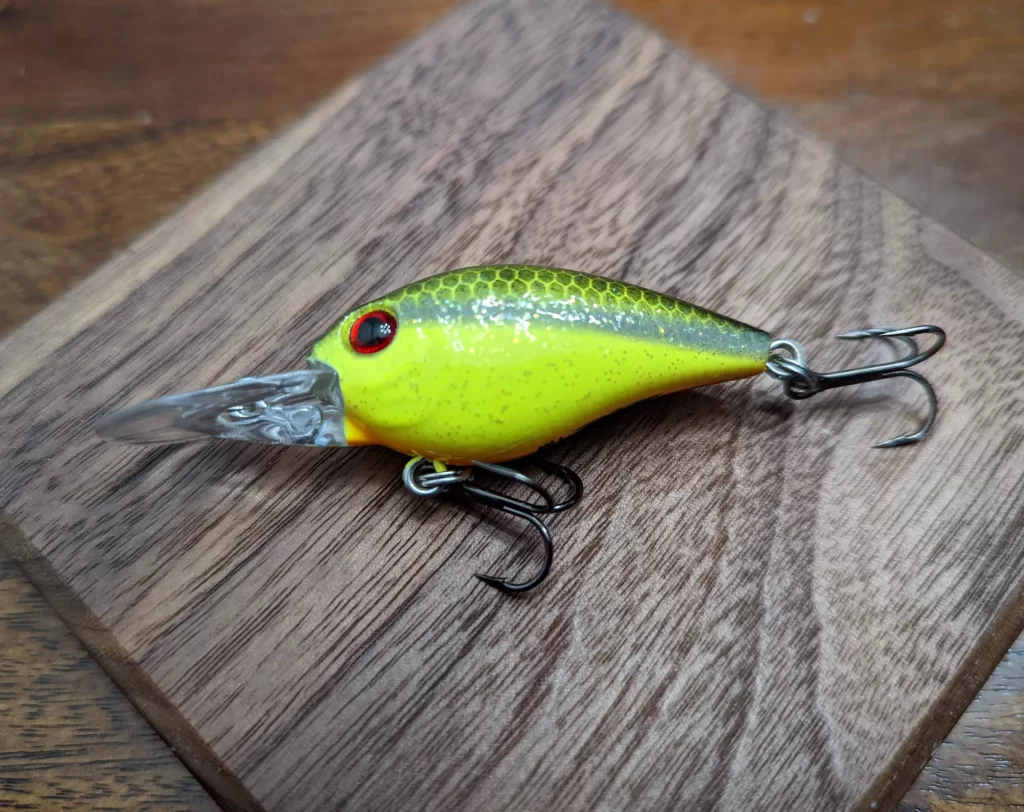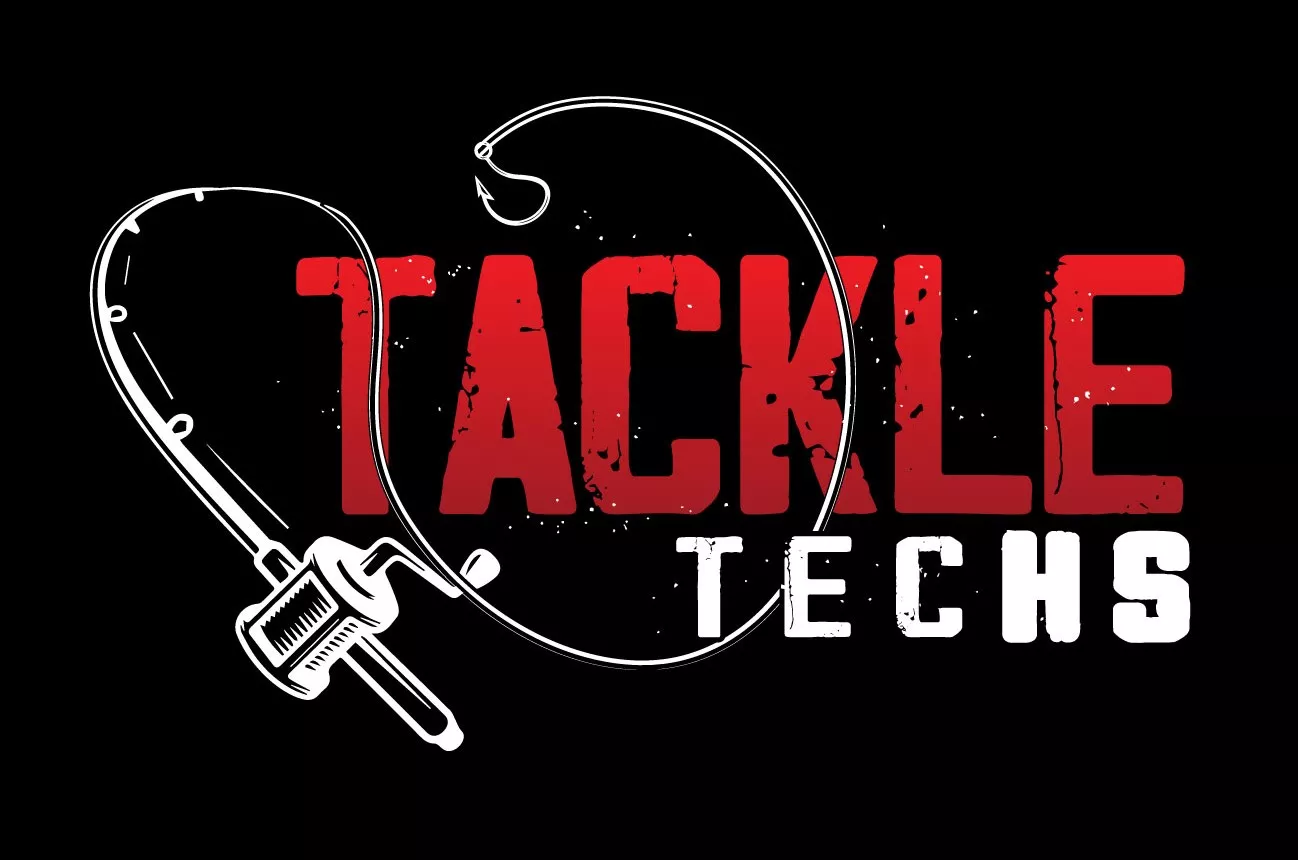What is a Crankbait? From Zero to Expert in 5 Minutes
What is a Crankbait?
A crankbait is a type of fishing lure that is designed to mimic the swimming action of a baitfish. It typically has a hard plastic body with a bill or lip at the front that causes the lure to dive and wiggle as it is reeled in. The body can be painted and shaped to resemble different types of baitfish or other prey species, and they come in a wide range of sizes, shapes, and colors to match different fishing conditions and target species. Crankbaits are popular among anglers for both freshwater and saltwater fishing, and they can be used to target a variety of game fish, including bass, walleye, pike, musky, trout, and more.

Table of Contents
What do Crankbaits Catch?
Crankbaits can be effective at catching a wide variety of game fish in both freshwater and saltwater environments. Some of the most common species that can be caught include:
- Bass (largemouth, smallmouth, and spotted)
- Walleye
- Pike
- Musky
- Trout (rainbow, brown, and brook)
- Panfish (crappie, bluegill, and sunfish)
- Catfish
- Striped bass
- Redfish
- Snook
Crankbaits are versatile lures that can be fished at different depths and speeds to imitate the movements of different types of baitfish or prey. By matching the size, color, and action of the crankbait to the fish species and fishing conditions, anglers can increase their chances of catching fish.
Types of Crankbaits
There is a huge selection on the market, probably more than any other type of hardbody lure. Other than the traditional style mentioned above, there are 3 main types.
Square Bill Crankbait

Just like it sounds, these have a lip that is squared off at the tip. Because of this, it has a much more exaggerated wobble compared to the traditional.
These are at their best when used around cover. The slower retrieve and wild action are great at enticing a bite from hiding fish. The square lip also allows it to bounce off of some structures like hard logs and rocks adding even more action.
Medium/Deep Diver

If its not obvious, these are designed to dive deeper and sometimes suspend down there. As a rule of thumb, the bigger the lip, the deeper the dive, but there are more things to consider.
A stout body will add drag in the water and will not allow it to dive as deep as a slimmer plug with the same size lip. The narrower bodys do not wobble as dramatically as the chunky ones, but do have a more natural swimming motion. Especially if it is jointed.
Some of these lures will advertise “suspending” somewhere on the package. What that means is the lure will not immediately float back the surface when you stop reeling. Instead, it will pause in the water before slowly rising. A good use for this is to pause your retrieve, then give it a couple twitches and start reeling again.
A variation of the deep diver is often used while trolling in the ocean. These are very large plugs with a lip that can get them down 50ft or more. These are most often used to catch king mackerel, barracuda and wahoo. They can also be used with great success to catch grouper, marlin, Mahi or any other large predatory species.
Lipless Crankbait

The final variation I am going to go over is the lipless. It may seem odd since we already established that one of the defining characteristics of a crankbait is the lip. If you look at the “forehead” of the lure, you will see that it is flat, this is what acts as the lip.
The action of these lures is far less drastic than a traditionally lipped plug, but because they sink quickly, there are a lot of different ways to use them.
What is the Best Color/Size?
Choosing the right size and color of a crankbait is critical to success when fishing with these lures. Here are some tips to help you pick the right size and color of crankbait:
Consider the size of the baitfish in the area: Choosing a crankbait that matches the size of the baitfish in the area can be very effective. For example, if the fish in your area are feeding on small minnows, you may want to choose a smaller size crankbait.
Think about the depth of the water: The size of the crankbait can also impact how deep it will dive. Larger crankbaits tend to dive deeper, while smaller ones will stay closer to the surface. Consider the depth of the water you’ll be fishing in and choose a crankbait that will dive to the desired depth.
Pay attention to the water clarity: In clear water, it’s best to choose a crankbait with a natural-looking finish that matches the color of the baitfish in the area. In murky water, a brighter or more contrasting color can help the fish locate the lure.
Match the color to the conditions: Consider the time of day, weather conditions, and water clarity when choosing the color of your crankbait. In low-light conditions or during cloudy weather, darker colors such as black, brown, or dark blue can be more effective. In bright sunlight, brighter colors such as chartreuse, white, or silver can work better.
Experiment with different sizes and colors: Don’t be afraid to experiment with different sizes and colors until you find the combination that works best for the specific fishing conditions.
Remember to pay attention to the specific conditions in your fishing location and adjust your approach accordingly.
When should you throw a Crankbait?
These are not lures for picking apart structure or trying to finesse a fish to bite. when you do not know where the fish are, it is a good idea to cover a lot of water.
- when you want to find where the fish are
- when fish are feeding on baitfish in open water, particularly in the fall
- around points and ledges, these are ambush points for predators
Common Mistakes to Avoid
Despite their effectiveness, fishing with crankbaits can be tricky, and even experienced anglers can make mistakes that decrease their chances of catching fish. Here are some common mistakes to avoid when fishing with crankbaits:
Choosing the wrong crankbait: Choosing the wrong lure for the specific fishing conditions can be a costly mistake. Be sure to select one that matches the size, shape, and color of the prey that the fish are feeding on in your location.
Retrieving too fast: Retrieving too quickly can make it appear unnatural and less enticing to fish. Slow down your retrieve and vary your speed to entice fish to strike.
Not varying your retrieve: Just like with any other type of fishing lure, varying your retrieve can make a big difference in your success. Experiment with different retrieves to find the one that works best for the specific conditions.
Fishing at the wrong depth: Choosing a crankbait that does not dive deep enough or that dives too deep can make it difficult to target fish at the right depth. Be sure to choose one that is designed to dive to the depth where the fish are located.
Using the wrong gear: Using a fishing rod that is too stiff or a fishing reel with a poor drag system can make it difficult to feel the action of the lure and properly set the hook.
Not paying attention to the details: Failing to pay attention to the details, such as water temperature, structure, and depth can make it difficult to catch fish. Be sure to pay attention to these details and adjust your approach accordingly.
Jerkbait VS Crankbait

Jerkbaits and crankbaits are both types of fishing lures that can be used to catch a variety of game fish. However, there are some key differences between the two:
Design: Jerkbaits typically have a longer, thinner profile with a more natural-looking finish, while crankbaits have a shorter, stockier body with a bill or lip that creates a wobbling motion.
Action: Jerkbaits are designed to be fished with a jerking motion, where the angler uses the rod to impart an erratic, darting movement to the lure. Crankbaits, on the other hand, are designed to create a consistent wobble or wiggle as they are retrieved.
Depth: Jerkbaits are often designed to suspend or slowly sink, which allows them to be fished at a variety of depths. Crankbaits are typically designed to dive to a specific depth based on their size and shape, and can be used to target fish at different depths in the water column.
Anglers may choose to use a jerkbait when they want to imitate a wounded baitfish, or a crankbait when they want to cover a larger area of water quickly and efficiently.
Advanced Tips
- in rivers with a decent amount of current, stand upstream of a rapid and simply hold the plug in the current letting the movement of the water do all the work. This is a good way to entice bites from fish waiting at the bottom. Great way to entice smallmouth and trout.
- always have a small pair of pliers on hand to tune the eye of the lure if it is not running straight. Simply bend it in the direction you want it to swim. you can also do this if you want it to run to one side.
- always have one weirdly colored lure on hand. Sometimes the fish just want to see something new.
If you liked this article, be sure to check out the rest of our site.

